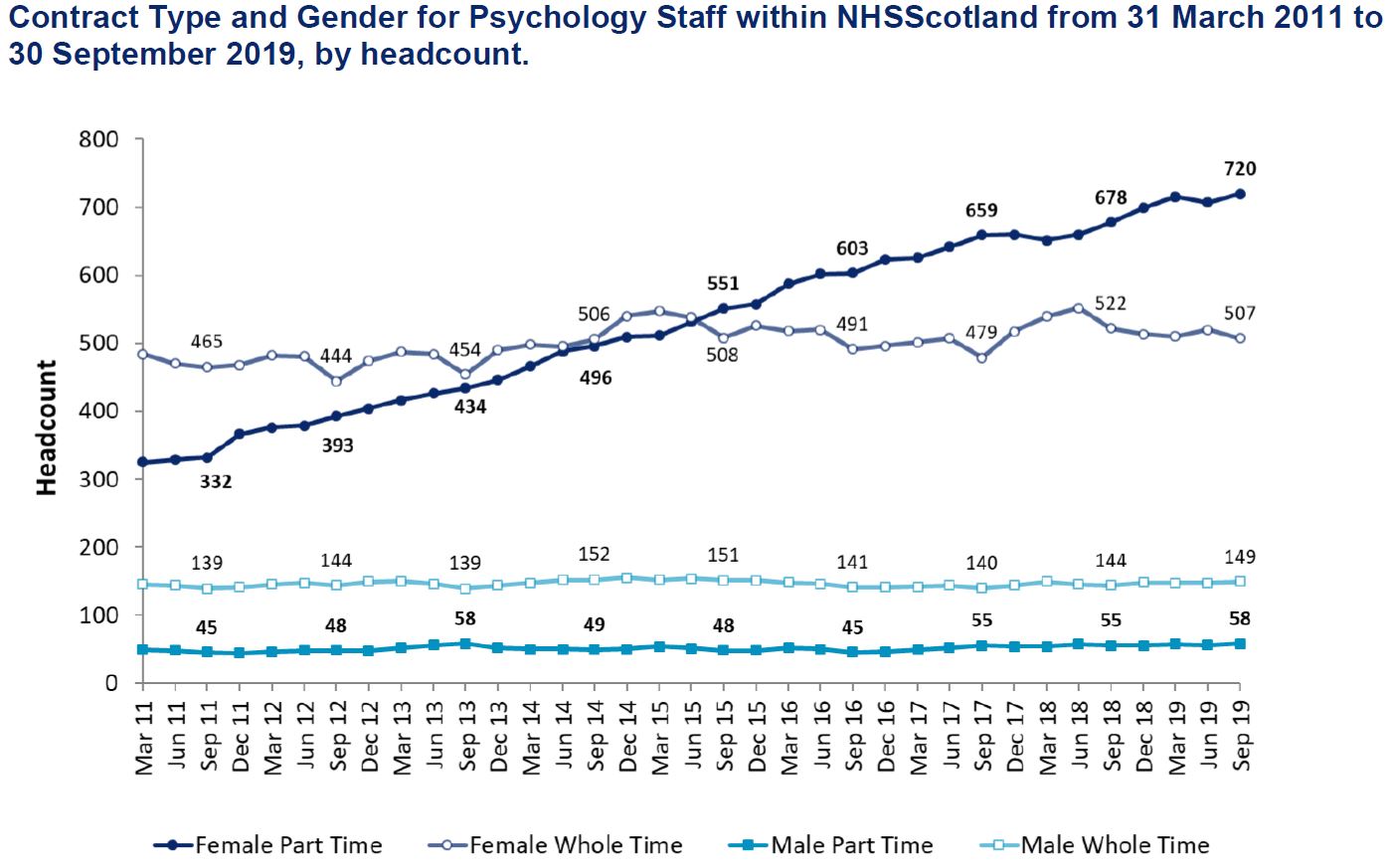- Home
- Data and reports
- Official workforce statistics
- All official statistics publications
- 03 December 2019 Psychology
Psychology Services Workforce in NHSScotland: Quarter Ending 30 September 2019
Quarter ending 30 September 2019
Official Statistics
Published: 03 December 2019
About this release
This release by NHS Education for Scotland (NES) provides a quarterly update, as at 30 September 2019, for the Psychology Services workforce staff in post and staff vacancies.
Figures are presented as headcount (actual numbers of staff) and whole time equivalent (WTE), which adjusts the figures to take account of part-time working.
Main Points
As at 30 September 2019:
- Within Psychology Services in NHSScotland, there were a total of 1176.1 WTE (1,434 headcount) clinical staff in post. This is 85.4% (541.7 WTE) higher than in September 2006, 2.3% (26.3 WTE) higher than reported 12 months previously, and -0.3% (-3.8 WTE) lower than the June 2019 census. Out of an establishment of 1318.9 WTE, 142.8 WTE posts were vacant, 72.9 WTE staff were on maternity/parental leave and 10.8 WTE staff were on long-term sick leave.
- There has been a consistent increase in the number of female staff working part-time within NHSScotland Psychology Services, from 325 headcount at 31 March 2011 to 720 headcount as at 30 September 2019 (+395 headcount, +121.5%). The number of female staff working whole time has remained relatively stable over this period (+23 headcount, +4.8%). At 30 September 2019, 58.7% of contracts for female staff were part-time, compared to 28.0% for male staff.
- There are currently 142.8 WTE vacancies being advertised for recruitment, of which 93.3 WTE (65.3%) are for Clinical Psychology positions. New posts account for 36.0% (51.4 WTE) of the total vacancies. While September vacancy rates tend to be higher than other quarters, the current rate of 10.8% of post vacant is the highest observed in NHSScotland Psychology Services since data collection began.
Contract Type and Gender for Psychology Staff within NHSScotland

Background
The Scottish Government 10 year Mental Health Strategy 2017-2027 was published in March 2017. The strategy highlights the need to increase the supply of the workforce and to ensure the skill mix across a wide range of services meets the needs of the population.
Further Information
The next release of this publication will be 3 March 2020.